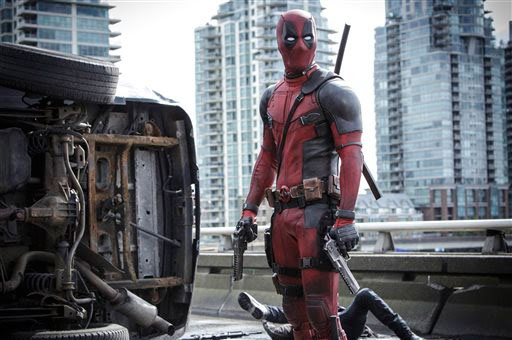
With all the superhero films released in the last decade, it’s practically impossible not to notice the repeated structure, themes and conclusions from one movie to the next. Though “Deadpool” isn’t part of the Marvel Cinematic Universe, Deadpool himself is a Marvel character, and his awareness of this fact — that he is a character in a superhero movie — is what makes the film one of the freshest, most satisfying superhero origin movies in recent years.
Before he went by Deadpool, Wade Wilson was a mercenary with a murky past and a skewed sense of morality. Ryan Reynolds shines as the titular antihero who is diagnosed with cancer, then subsequently becomes a physically scarred mutant with an accelerated healing factor after going through an experimental, torturous procedure to be cured. Despite this, Wilson still maintains the witty, albeit crude, sense of humor Deadpool is known for, and Reynolds depicts this vengeful, comedic character to near perfection.
What makes this movie stand out from so many other superhero films is the same thing that made the comics popular: self-awareness. “Deadpool” often breaks the fourth wall and addresses common quirks among films of the same genre.
For instance, the opening credits don’t feature the actors’ names, but rather the types of roles they’re portraying— “The Comic Relief,” “A British Villain” and the like. Its R-rating — as opposed to Marvel’s usual, box office-friendly PG-13 ratings — gives it a bit more leeway, which the filmmakers definitely take advantage of. With dirty jokes, graphic violence and several depictions of sex, “Deadpool” revels in its maturity, using raunchiness to increase the level of entertainment without being too serious.
The film plays on the whole origin story trope — how a superhero gets their powers — by acknowledging that it’s cliché and overused. The movie starts in the middle of the action, then flashes back to how Deadpool came to be the character shown in the opening scene. It often hops back and forth between the past and the present, balanced out by smooth transitions of Deadpool’s narration. Though this style of storytelling works well to enhance the irony the movie is based upon, it limits the depth that could have been achieved had the story been told in chronological order. By flashing from past to present often, the audience misses out on how the various events shown in the film affected its title character.
At one hour and 48 minutes, “Deadpool” is on the shorter end of modern superhero films. Because of the length, not much time is spent on developing the hero or the supporting characters. For example, Wade’s time with Vanessa, his former girlfriend and the main female character, seems much too short. Though clearly not meant to be a romantically driven film, we hardly witness Wade falling in love with her before he discovers he has cancer and leaves to find a cure.
Despite this, “Deadpool” is clever and engaging, and Reynolds’ performance will have the audience sympathizing with him every step of the way. It is the character’s self-awareness and frequent direct contact with the audience that sets him and the movie apart from other superhero films. Because of this, superhero movie lovers also experience a feeling of self-awareness; their favorite genre can be playfully prodded at with accurate but humorous critiques. They are able to humbly accept that though superhero movies may become repetitive and predictable, they are, at heart, pure entertainment.


